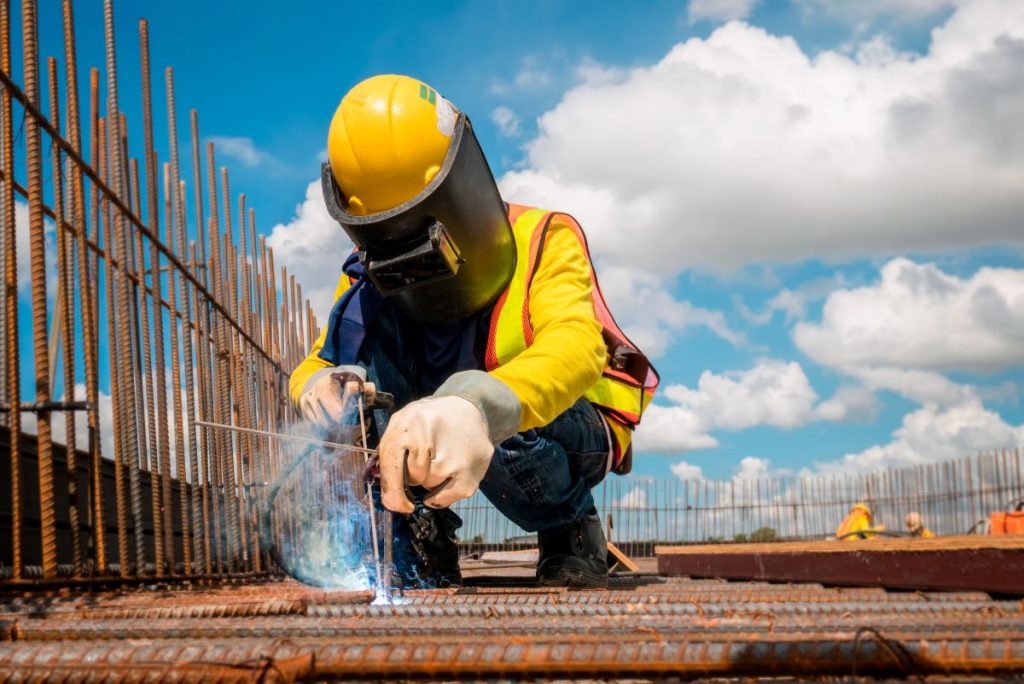The changing needs of an increasingly automated world are combining with the advent of digital technologies that can be used in construction to create a new way to approach the industry. Building something has become a lot less simple. There are now ethical, environmental, and capacity concerns that affect the materials, the designs, and the working environment. Yet, the path leading to the physical act of building has become easier.
Digital technologies have given architects and builders a way to assess and analyse to the extent that can help to predict any problems before it becomes too late or too expensive to address them. Advances in wearable technology and building equipment have also made the worksite safer for the people on the ground. While reliable equipment such as construction safety boots will never go out of style, the addition of lifting machines, automated scaffolding machines, and drones will add extra levels of security.
The future of construction is, therefore, twofold. It relies on the drive and desires of the people who want to build and on the technologies that will allow their desires to take shape.
Clients Desire Innovation
Clients are increasingly becoming aware of the innovations and technologies that can be used in construction. They want to invest their money in construction techniques that are cutting edge. They see this as a nod to the future, as more reliable and worth any extra cost.
Increased client expectations mean that construction companies will have to be able to deliver to their expectations. They will have to be ready to offer more modular and personalized solutions, using the technologies that allow for this specialization.
Building Information Modelling
Building information modelling or BIM is rapidly becoming the most commonly used technology in construction. It is the process of creating a digital representation of the building using modelling software. It allows for a more reliable evaluation of what the building efforts will require.
Some BIM software can create 3D models, adjust for scheduling, cost estimating, and sustainability. When combines with the way it allows for enhanced coordination of services and an opportunity to test out new techniques digitally, the advantages of this software become evident. It saves builders and clients a great deal of time and money and significantly reduces the chance for mistakes or miscalculations.
Construction as a Start-up Industry
Giant 3D machine arms and large-scale material printing software and technology have now made it possible for someone to design and print a house. While 3D-printed buildings are still in their growth phase, modular housing is already in use.
Many companies now offer the option to work with them to design a building that will be constructed with interlocking wooden panels. These panels come in different designs as well. Some companies offer panels that would go over the framework of your home, similar to the siding. They are intended more as a way to reduce the environmental impact of using more concrete and paint.
Other start-ups offer hollow box-like panels filled with concrete or insulation after being locked into place. These panels do require a foundation of mortar and cement onto which they will be secured. Even so, the amount of investment that goes into building these houses is significantly lower than a full brick and mortar or fully cement home. The environmental impact of such a home is also a great deal lower.

Digital Twin Analysis
Using technology to render a digital twin of the building is a new trend that sees a lot of interest. This technology uses simulation and predictive analysis to gauge the viability of the building design, the materials, the individual services, etc.
It can be used to assess the energy requirements, the environmental quality, the stress of energy management systems, facilities management, and many more. While undoubtedly helpful for any building, this technology is even more necessary when put towards a new type of building.
It allows architects to take more leaps of imagination as they can now test to see if their designs are cost-effective or not. Companies who require large buildings can determine if the costs of running the building are worth the trouble of building it. It is an invaluable resource for the future of construction.
These are just some technologies and client considerations driving the construction industry’s need to adapt for the future. Additional technologies like augmented reality software allow construction companies to visualize elements of design, build, and the real-world environment in which the work will take place.
This will reduce the overhead spent on planning a great deal. Machines designed to make lifting, mixing, or transport easier will also require a change in the personnel who are on the ground. Builders will need more specialized training than ever before. This next generation of hands-on and digitally trained craftsmen can deliver a higher quality service that allows for more creativity in the process.
The future of construction is looking better than ever.

